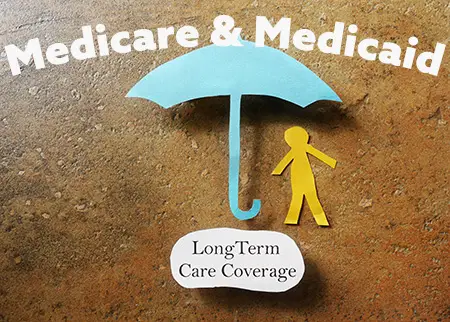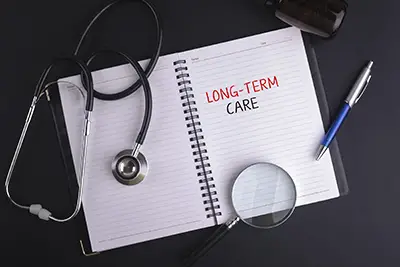Medicare and Medicaid are two insurance programs run by the government.

They were created in the year 1965 by President Lyndon Johnson’s under his programs for great society. The two programs ensured that Americans of low income or senior citizens could access private health insurance.
The Medicare and Medicaid program share the financial burden of taking care of illnesses equally between the rich, the low-income households, the healthy, and the sick. Although these two programs are run and funded by parts of the government, each one of the programs is unique.
Medicare
Medicare is a federally run program that provides health insurance coverage to individuals that are 65 years or older. The program also caters for people who are below 65 but have a severe disability.
Medicaid
Medicaid, on the other hand, is a state and federal program that provides health coverage for individuals that are from low-income backgrounds.
Some people, therefore, might qualify for both Medicare and Medicaid program. Individuals who qualify for both programs enjoy low-cost care because both the programs collaborate to achieve this. Some of the patients that qualify for both the covers include those that have severe disabilities and are from low-income households.
Although the government runs both programs, there are differences in the services covered, the duration, and the cost-sharing programs. A long term care program is critical for guaranteeing the health of seniors since most of them have medical conditions that require a long term care program to manage.
Importance of Medicare and Medicaid
Medicare and Medicaid program are critical at promoting the health of the old and the vulnerable in the society.

These two programs enable people from low-income households to access healthcare coverage. This allows the people to afford medical procedures and processes that they could never have afforded otherwise.
Medicaid advantages help to ensure that when citizens are older, they have access to quality medical care because that is when they need it most. According to research, as people get older, their vital organs start to deteriorate. At the old age, people are also vulnerable to poor health due to past injuries or a weak immune system.
The importance of Medicare and Medicaid is highlighted in the number of people it enables to access quality healthcare, thus saving lives. Other Medicaid advantages include services such as inpatient and outpatient care as well as doctor services.
Medicare and Medicaid facts
Medicare rules and regulations are relatively simple.

They include concepts such as what does Medicaid not cover and what Medicaid covers. Other essential policies include the Medicare home health care regulations.
Some interesting Medicare and Medicaid facts include the requirement for patients to pay a little amount in the form of deductibles or co-pay. This money is the amount that patients are required to contribute during the treatment period. In most of the times, however, this amount is small and only payable once.
Medicare rules and regulations are made by the federal authority that administers the program. Medicare home health care regulations stipulate what home care is and how it is to be delivered and covered by the insurance program.
Who pays for Medicaid and Medicare?
This question is in the minds of many people.

Medicaid is paid for by the federal government and the state governments. There are several ways to pay for long term care. The federal government pays the states for a share of the program expenditures known as the federal medical assistance percentage (FMAP).
Each state is paid a different amount of the FMAP based on the per capita income of the residents among other factors. Medicare, on the other hand, is funded by the social security administration. Taxpayers pay 1.45 percent through the federal contributions act.
Employers, on the other hand, pay 1.45 percent to bring it to 2.9 percent. The question on who pays for Medicaid and Medicare can be best answered by stating that ultimately, it is the taxpayers who pay for these programs through remittances and taxes.
What does Medicaid not cover?
Many people often ask, ‘what does Medicaid not cover?’ If you are among these people, you need to know that Medicaid does not cover long-term care. It only covers the costs of doctor visits, hospital expenses, and nursing home care.
If a patient requires long-term care by a skilled nurse, Medicaid does not cover for this and the patient may require taking another policy or paying for the services. Programs such as united healthcare assisted living require clients to have private insurance. Other ways to pay for long term care include private insurance and cash options.
Long-term care
Long-term care is providing services to patients who require an extended period to heal or rehabilitate.

Long term care can also be extended to patients who are not able to take care of their health and well-being.
The average cost of dementia care is $2,700-$6,000 per month depending on the state you’re in. With the average cost of dementia care being very high, only Medicare can help the affected person receive the long-term care he or she needs. Long term acute care Medicare policies are friendly.
Medicare long term acute care is mostly provided at no cost or at a low cost. For instance, long term acute care Medicare options allow patients to enjoy the first sixty days for free. Medicare long term acute care can be costly if a patient exceeds ninety days while as an inpatient. This is because the patient is required to cover the cost if his or her stay as an inpatient on the primary plan exceeds ninety days.
What is extended care? Extended care involves offering nursing care to patients who need it for 24 hours. Answering what is extended care helps us to understand what a skilled nursing facility is. This is a facility that provides skilled nursing services to patients who require these services in-house and for an extended period.
Who pays for long term care?
Long term care is usually paid for by insurance programs that are privately funded in conjunction with the government. Essentially, who pays for long term care? Well, it’s the taxpayers through their remittances to the government.
What part of Medicare covers long term care?
The answer to the question on what part of Medicare covers long term care can be found on the website. Part A covers the long term acute care and services such as rehabilitation, pain management, and respiratory therapy.
Long term care vs nursing home
Reviewing long term care vs nursing home is interesting. Long term care can be administered in a hospital for patients who require assistance in certain activities. Nursing homes, on the other hand, are appropriate for patients who need round the clock nursing care such as united healthcare assisted living.



